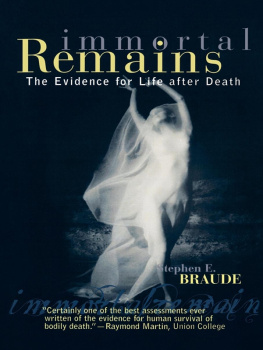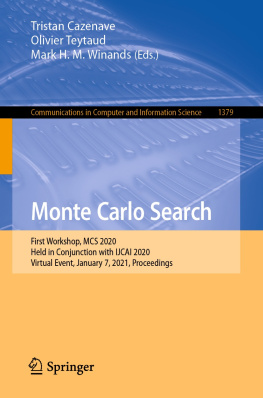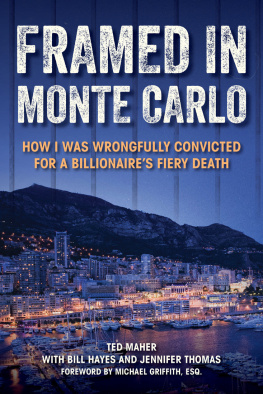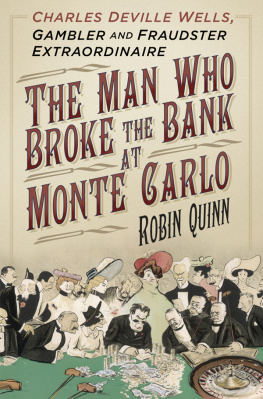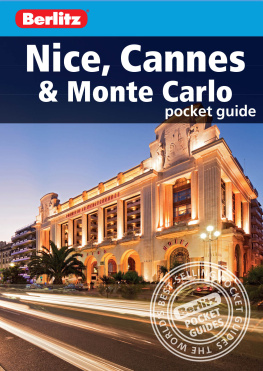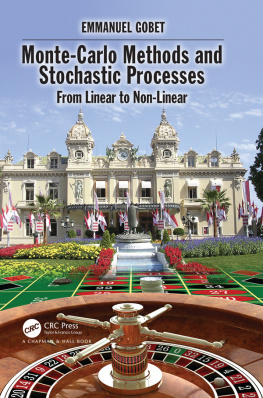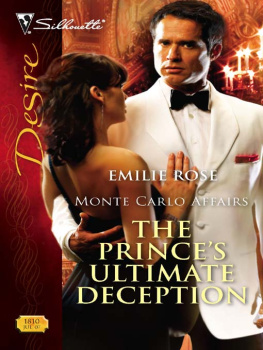Thank you for downloading this Simon & Schuster eBook.
Join our mailing list and get updates on new releases, deals, bonus content and other great books from Simon & Schuster.
C LICK H ERE T O S IGN U P
or visit us online to sign up at
eBookNews.SimonandSchuster.com
We hope you enjoyed reading this Simon & Schuster eBook.
Join our mailing list and get updates on new releases, deals, bonus content and other great books from Simon & Schuster.
C LICK H ERE T O S IGN U P
or visit us online to sign up at
eBookNews.SimonandSchuster.com
CONTENTS
For Laura
I.
Culture follows money.
F. Scott Fitzgerald, Letter to Edmund Wilson
II.
Wed been in Monte Carlo for a little while before. Wed seen all the same people there that wed seen in the winter in St. Moritz and that wed seen in the fall in Venice... they werent just the international crowdthey were like a whole new nationality. A nationality without a nation.
Andy Warhol, The Philosophy of Andy Warhol

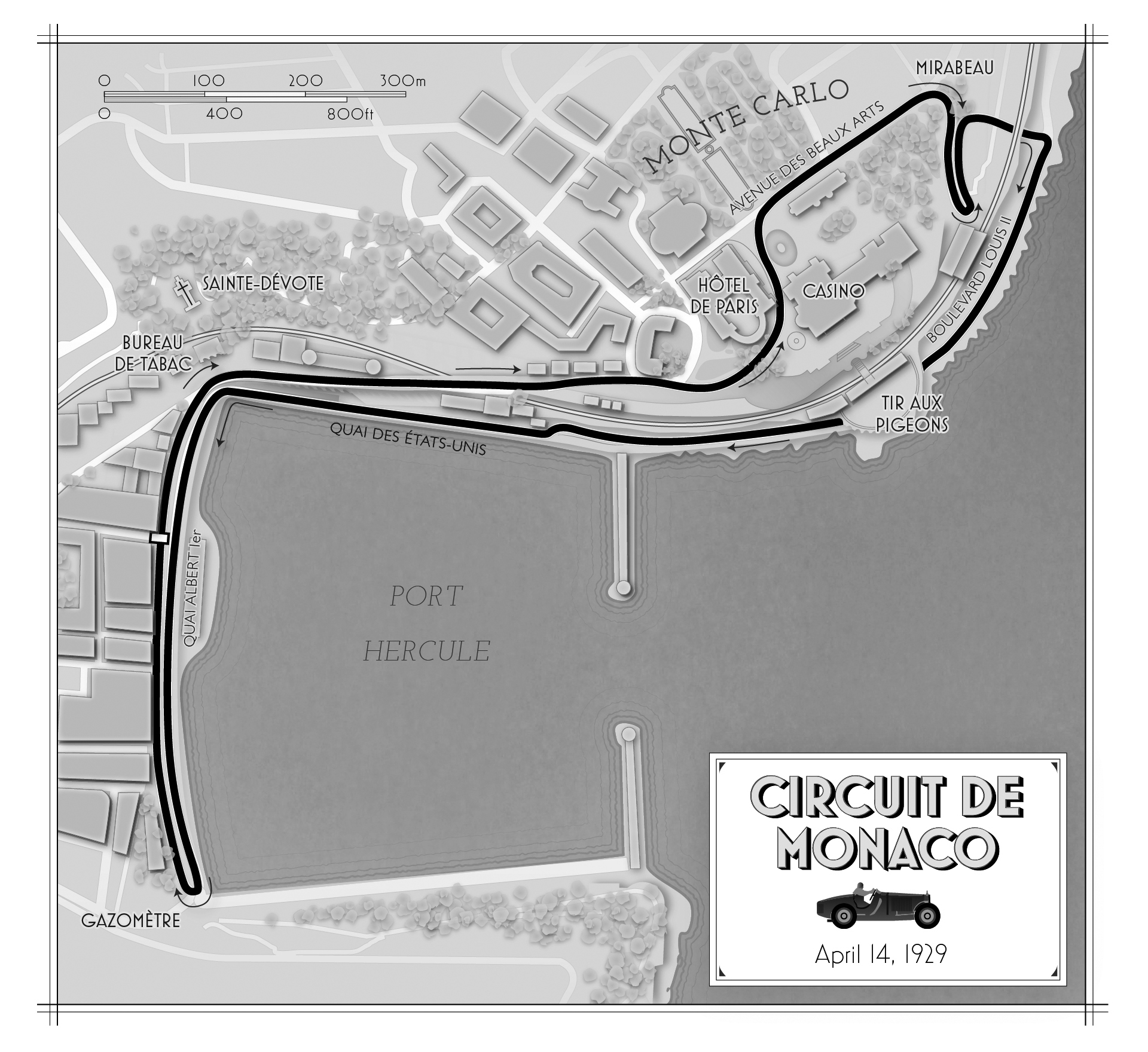

PREFACE
MONTE CARLO STORIES
It came vividly to Selden on the Casino steps that Monte Carlo had, more than any other place he knew, the gift of accommodating itself to each mans humour.
Edith Wharton, The House of Mirth
IN 1863 WORK BEGAN on a new town at the eastern edge of the tiny principality of Monaco. By the close of the next decade the Monte Carlo casino-resort had emerged as the worlds gambling playground of choice.
In the same era, the color poster gained favor as a form of mass advertising. Posters could be printed cheaply and distributed widely, and they came out as glossy and disposable as the attractions they sold. Designed to grab the attentions of passersby hurrying through crowded urban spaces, they seduced by offering glimpses into the forbidden. Posters advertising Monte Carlo promised a town without shadows, where sun-kissed lives played out on clay courts and under canvas sails. They featured fast men and fast women doing fast things in fast machines. Only rarely did the posters show the casino that funded their production.
People critiqued the new resort and its preferred advertising medium in similar terms. Both were deemed garish and vulgar, overly sexualized and superficial. Both pandered to the vain, venal, and selfish. Both brazenly put culture in the service of commerce.
The first visitors to the gambling town found it looked nothing like the one in the posters. Accustomed as they were to wax museums and phantasmagorias and other pleasant lies of the age, they wouldnt have been particularly upset by this deception. They hadnt taken the long and costly trip to the coast to emulate the people in the posters. Theyd come to Monte Carlo because it was the only place for hundreds of miles to legally play at cards, dice, and wheels. Among those first visitors, any trace of glamour or luxury would have been understood merely as a nice touch, an added bonus.
Later, after enough people had passed through and lost enough money, the real Monte Carlo started to look better than the one in the posters. Now you came for the glamour and the luxury. Now the gambling was the nice touch, the added bonus.
This second act was in many ways harder to pull off than the first.
At the time of its debut in 1911, the Monte-Carlo Golf Club was one of four full courses on the European continent. It was a spectacular venue, perched up on a mountainside nine hundred meters above the sea. Sheep wandered onto the fairways. Built to please the Rivieras British expats, it was paid for by Monacos largest developer: the Socit Anonyme des Bains de Mer et du Cercle des trangers Monaco (the Sea Bathing and Foreigners Circle Company of Monaco, hereafter SBM). This same company owned the Monte Carlo casino and a host of other attractions in the principality. The SBM also maintained the local roads and harbor, and provided the people of Monaco with water, gas, garbage collection, and so many other services that a Guardian reporter suggested that the company was the real, subtle, subterranean, but omnipresent power and influence in Monaco, the State within a State.
In 1928 the SBM built another dazzling attraction for its international clientele, the Monte-Carlo Beach hotel, which stood on a crescent-shaped stretch of shoreline twenty minutes walk from the main casino. With terra-cotta roofing and thatched breezeway lined with palms, its design nodded to the Mediterranean as much as it did to Hollywood or Palm Beach. This makes sense, since the hotel was the brainchild of the American press agent Elsa Maxwell, whod recently been hired as the SBMs publicist. As Maxwell liked to tell it, when she asked that the hotels Olympic-size swimming pool be placed right at the edge of the ocean, the French contractor in charge was so puzzled he held up work until a clause was inserted in his contract guaranteeing him full payment in the event I later was proved to be mentally incompetent.
Apart from their both being funded by gambling losses, the Monte-Carlo Golf Club and the Monte-Carlo Beach hotel share another common trait: neither one is located in Monte Carlo, or even in Monaco. The Golf Club covers a slope of Mont-Agel in France, while the Beach hotel sits a quarter mile to the east of Monaco in Roquebrune, also on French soil. Monaco, fabled land of luxury and sun, lacks the tableland suitable for an eighteen-hole course, as well as any decent natural beachfront.
When Alfred Hitchcocks Riviera thriller To Catch a Thief opened in American theaters in the summer of 1955, the print campaign featured a shot of Grace Kelly and Cary Grant superimposed onto a scene of Monacos harbor twinkling in the night, with a tagline that promised: When They Meet in Monte Carlo Your Emotions Are in for a Pounding! But in the film Kelly and Grants characters meet at the Carlton in Cannes, and very little of To Catch a Thief takes place in Monte Carlo. Hitchcock shot most of the footage that does feature the resort stateside on the studio lot, using rear projection. And it wasnt while making To Catch a Thief in 1954 that Kelly met her future husband, Prince Rainier, as is sometimes claimed, but rather the following year, while she was a guest of the organizers of the nascent Cannes Film Festival. That couples first meetingthe prince offered the movie star a tour of his palacehad been a carefully staged photo opportunity, arranged by an editor of the illustrated weekly Paris Match.
While this book offers a history of a gambling town, it is less concerned with gambling than with tracing how a small group of men and women discovered that what was bought and sold in a casino could be something greater than the turn of a card or the spin of a wheel. Above all, this is a book about how we create places largely through the stories we tell about them, and about how places can in turn be made to suit those stories, rebelling against some and trading on others as needed. In other words, any accurate history of Monte Carlo must also include a history of the inaccuracies spun about Monte Carlo.
Next page

